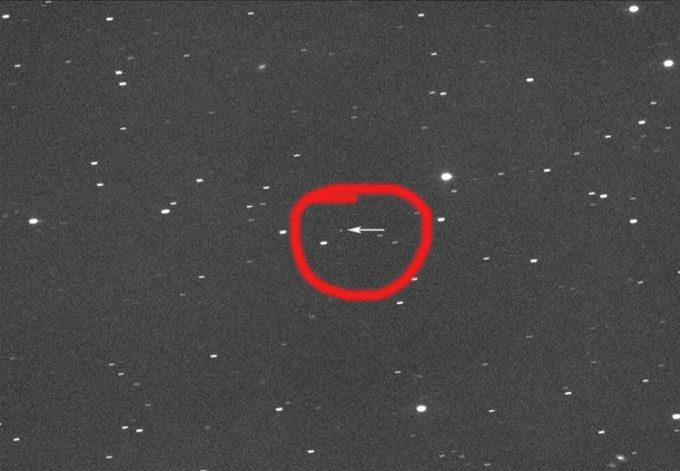The asteroid (455176) 1999 VF22 is expected to fly past Earth at 2:54 PM on February 22 (Hanoi time) at a distance of over 5 million kilometers.

Image of asteroid 1999 VF22 taken on February 11, 2022. (Photo: Gianluca Masi/Virtual Telescope Project)
1999 VF22 is classified as “potentially hazardous” due to its relatively large size and proximity to Earth. However, next week, it will safely pass by our blue planet.
The closest distance between 1999 VF22 and Earth during this approach will be 5,366,000 km, nearly 14 times the distance from Earth to the Moon. Observers wishing to see this asteroid pass by will need a good telescope.
The Small Body Database of NASA’s Jet Propulsion Laboratory (JPL) estimates the absolute magnitude (M) of 1999 VF22 to be 20.7. In comparison, the absolute magnitude of the Sun is 4.83 (the brighter the object, the smaller this number). However, without albedo—the amount of light reflected by the surface—it is very difficult to determine the actual size of 1999 VF22. The estimated diameter of the asteroid is between 190 and 430 meters, with some observations in 2019 suggesting it is about 225 meters wide.
This will be the closest approach of 1999 VF22 to Earth in over a century. The asteroid is expected to come even closer on February 23, 2150. The last closest approach occurred on October 31, 1999. Despite its large size and proximity to Earth, the Catalina Sky Survey did not detect it until November 10, 1999.
Scientists are developing defensive measures to address the risk of asteroids colliding with Earth. For example, last November, NASA successfully launched the DART spacecraft to test asteroid deflection techniques. There are many asteroids in the Solar System, but NASA is particularly concerned with near-Earth objects. As of December 2021, approximately 28,000 such asteroids have been discovered.


















































